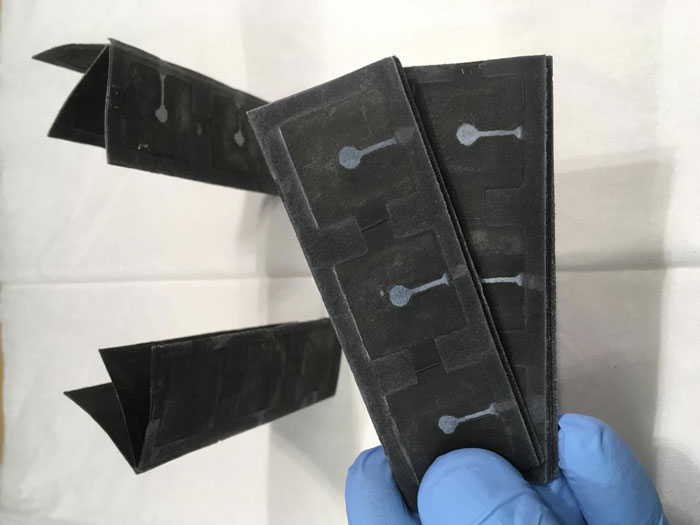A bio-battery that powered by bacteria, could be manufactured cheap and easily
This battery is powered on a single piece of paper and has the potential of becoming power source for medical sensors. The power is generated by bacteria that can be commonly found on wastewater.
What is it made of?
 Credit: Science Alert
Credit: Science Alert
A single piece of paper called papertronics, a fusion of paper and electronics with a ribbon of silver nitrate is laid on a piece of chromatography paper which is used to seperate colored chemicals or substances (“Paper chromatography I chemistry”, 2018), then a layer of wax is placed on top of taht to create cathode (positive electrode). While a conductive polymer act as a anode (negative electrode) by filling a few drop of wastewater liquid that contains bacteria.
“Papertronics have recently emerged as a simple and low-cost way to power disposable point-of-care diagnostic sensors,”
-Seokheun “Sean” Choi from Binghamton University Engineer
How it works?
When both the cathode and anode is contact with each other, a cellular respiration will take place to power the battery. Cellular respiration is a reaction where the cells and organisms making chemical transformations which take place in the cell of organisms to convert biochemical energy to waste products. Respiration is where the cells release chemical energy to fuel cellular activity. (Bailey, 2016) The amount of power output is depend on the quantity of paper and the way it stacked and folded. The research tested in two experiment, they folded the paper as shown on the picture above. The first experiment, a total of 6 batteries, 3 batteries in a row, and folded to against each other into three, produce a ratio of 1:4 of microwatts and microamps. The second experiment, is the same as the first experiment, but the only difference is six batteries in a row, produce a ratio of 1:2.3 of microwatts and microamps. The researchers acknowledge that the performance of this battery depends on the gaps, or arrangement of the paper layers.
Existing research
In 2016, a team of researcher from China and US showed an origami-style lithium ion battery that can stretch and retract. Few months later, researcher from Sweden made a sheet of cellulose and polymer that can store energy. At November 2016, UK design a battery that is inspired by human intestine. The lithium-sulphur battery catches the sulphur fragments that break off over time to resist degradation (Dockrill, 2016).
Where is the product heading?
They can be use to run sensors which monitors glucose levels in diabetes or detect panthogen in a person’s body. (Wood, 2017)
Conclusion
This technology stills required alot of work with the current working conditions, it requires million of these paper batteries just to power up a 40-watts bulb. And with nowadays household, there are more than just a bulb to powered up. But this technology is definitely a clean way to produce electric, as this technology’s source can be found everywhere on earth.
Reference:
- Bailey, R. (2003). Cellular Respiration. Retrieved from https://www.thoughtco.com/cellular-respiration-process-373396
- Dockrill, P. (2016) This Foldable Battery Is Powered by Bacteria From Wastewater. Retrieved from https://www.sciencealert.com/this-foldable-battery-is-powered-by-bacteria-from-wastewater
- Paper chromatography I chemistry (2018). Retrieved from https://www.britannica.com/science/paper-chromatography
- Wood S. (2017). This Paper-Thin Foldable Battery Is Powered by Bacteria. Retrieved from https://invisiverse.wonderhowto.com/news/paper-thin-foldable-battery-is-powered-by-bacteria-0175667/t